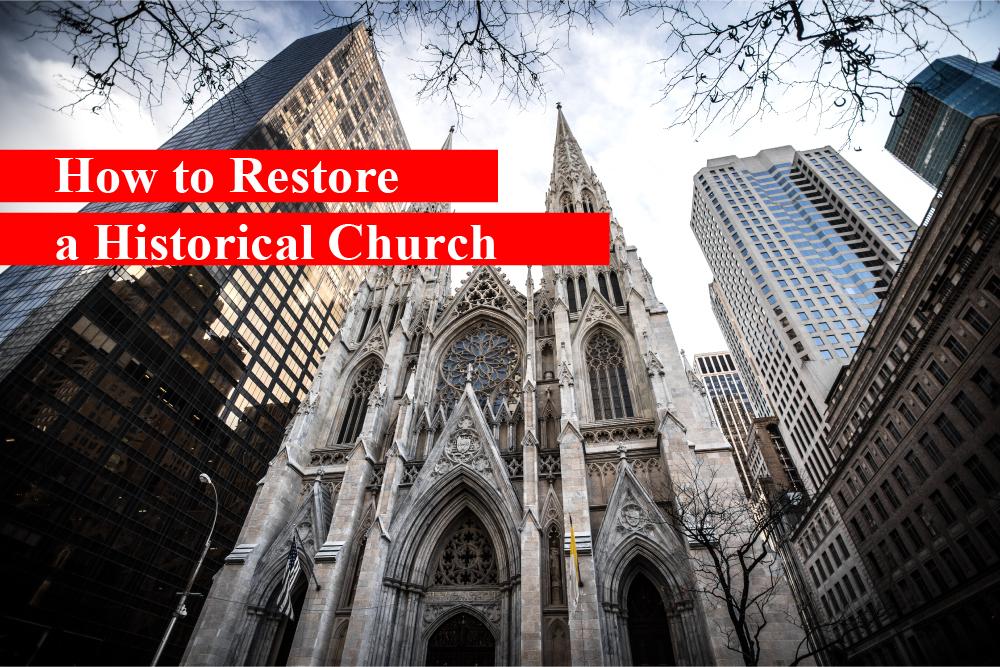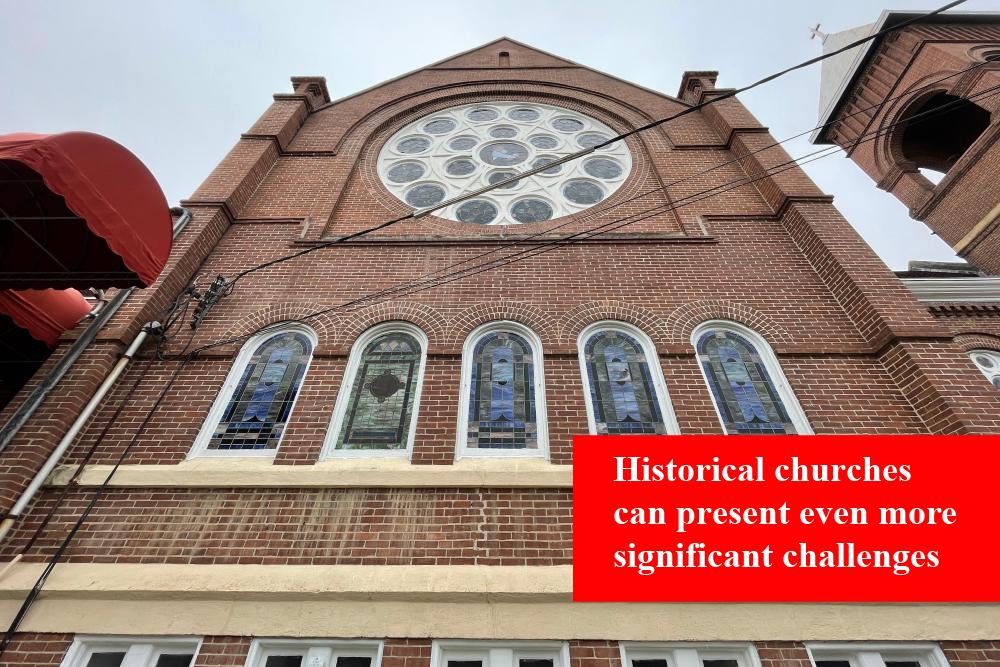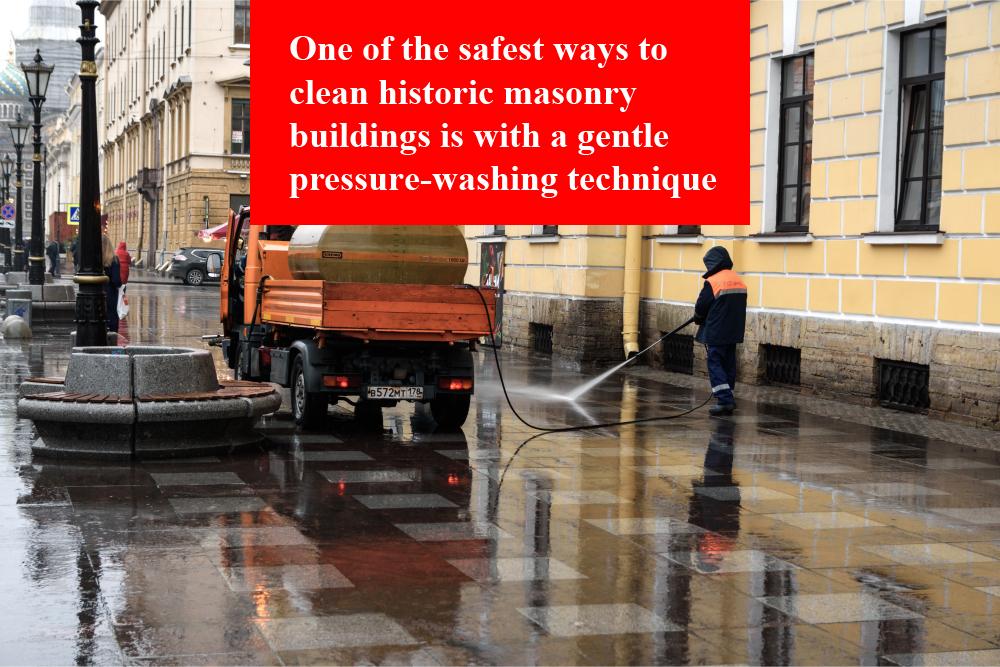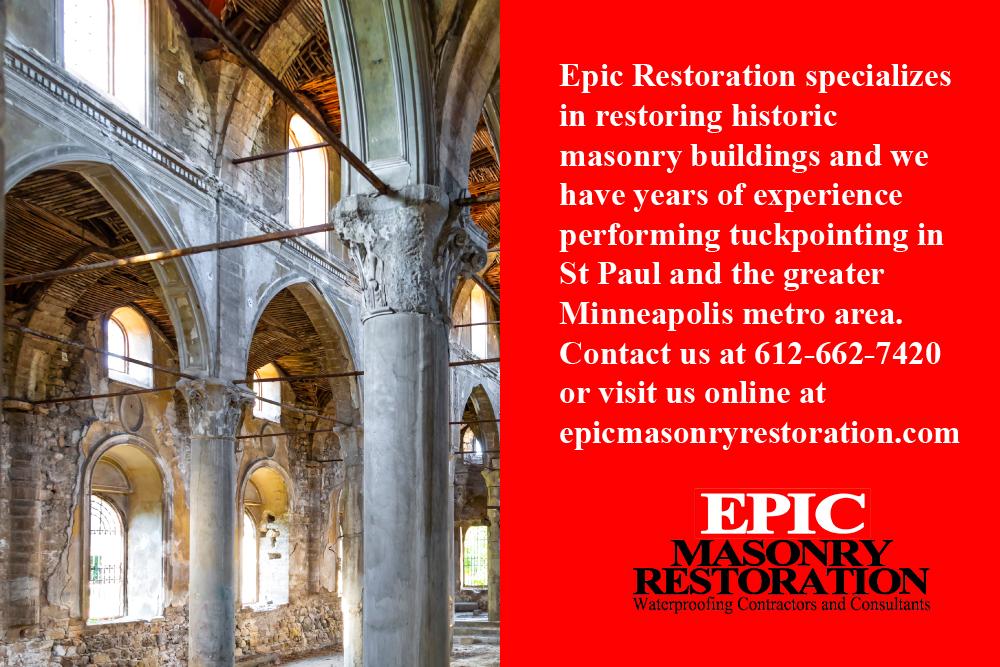
Historical Building Preservation
Historic masonry buildings all have some common issues that need to be addressed, and architects, contractors, and property owners face several challenges when evaluating these types of structures. The term “historic” generally refers to buildings at least 50 years old with significant architectural and/or cultural value. Historical churches can present even more significant challenges as these structures are viewed as historical icons and religious monuments that carry spiritual and cultural importance.

While older buildings continue to be relevant in the modern era, the repairs that are inevitably needed from time to time must maintain both the property’s historical significance and the building’s structural integrity. Extreme care must be taken when it comes to buildings that hold such significant cultural and spiritual importance as historical churches. It is of the utmost importance that brick and stone masonry restoration projects be thoughtfully designed and properly carried out to preserve the building’s structural integrity and cultural value for future generations.
When planning the restoration of a historical church, all the factors that go into choosing the right cleaning materials and implementing the proper cleaning and repair techniques must be carefully selected and correctly implemented. Following are the factors that must be taken into account when planning the restoration of a historical church:
Materials
Historic masonry materials primarily include brick, natural stone, cast stone, concrete block, and terra cotta held together by mortar. Mortar typically comprises 20 to 25 percent of a masonry wall, and while masonry materials have excellent compression properties, the tension property of mortar is generally poor unless the material is adequately reinforced.

The strength, density composition, gradation, and water absorption properties common to each type of masonry material vary based on a number of factors. These factors affect the cohesiveness of the mortar and the overall strength of the finished wall. Because of these variables, it is critical to know the specific characteristics common to each material when repairing any masonry structure so the proper course of action can be ascertained and executed.
Mortar for Historical Building Preservation
It is critical to match the new and existing mortar to maintain the building’s appearance when restoring the masonry of a historical church. Nearly every masonry building in the U.S. built before the turn of the 20th century with constructed with lime-based mortar, and the color of the mortar was dependent upon the amount of lime in the mix. As cement proportions in mortar mix grew to replace lime completely by the 1920s, it requires skill and experience to match the color of the new mortar with the existing mortar to maintain the building’s aesthetic qualities and historical value.
Historic Preservation Contractors
Properties that hold historical significance require a customized restoration plan that includes sourcing original materials and using traditional construction methods to maintain the building’s original appearance and period significance. This is even more important if the building is listed on the historical registry, as older churches often are, as registry requirements must be maintained to preserve the building’s status. As such, it is paramount that any repairs done on a historical church only be carried out by commercial masonry contractors qualified in historic preservation techniques.
Tuckpointing
Just by the nature of its composition, mortar joints fail long before the brick, stone, or block masonry unit. Failing mortar joints can show signs of cracking, chipping, or even complete disintegration, where the mortar can completely transform into loose sand. When this happens, the mortar has reached the end of its service life and must be professionally repaired. In the more northern latitudes, like Minnesota, the severe weather and temperature changes from summer to winter can rapidly impact masonry once it starts to fail and can lead to dangerous conditions where the masonry units can detach from the structure.
Because there are several key elements to repairing the tuckpointing on historical buildings, professional masonry restoration contractors should be consulted to effect repairs whenever indications of failure are observed. A professional tuckpointing process includes removing the failing mortar to the proper depth, properly preparing the joint, carefully matching the mortar type and color, and correctly applying the new mortar. When done correctly, the finished joints will blend in perfectly and compliment the rest of the structure, so it is next to impossible to tell that a repair was performed.
Brick, Block and Stone Masonry Restoration
Brick, block, and stone repair typically consist of replacing damaged masonry units and mortar joints. If brick, stone, or block become damaged and are not promptly and adequately repaired, the integrity of the entire system can be jeopardized. One of the biggest threats to masonry is the freeze and thaw cycle along with the driving wind, snow, and rain of winter weather. This causes damage to portions of the masonry systems, causing fissures and cracks in the mortar and damaging bricks and blocks, compromising the overall integrity of the building. The repair process is mainly determined by the type of damage and the desired results. A historical masonry repair contractor will also be able to inspect aging anchoring and fastening systems and recommend the best course of action.
Proper Cleaning
A wide variety of contaminants from various environmental factors can damage historical masonry. Atmospheric pollution, auto exhaust, road salts, dirt, grime, efflorescence, and biological contaminants like mold and algae are some of the destructive forces that can cause unsightly stains and erode masonry as well as mortar. For example, efflorescence occurs when dissolved salts or solvents that have penetrated into the pores of bricks or concrete blocks migrate to the surface and form an unsightly white coating. These contaminates can come from road salt, hard water, or chemicals that have splashed on the masonry. Oxidation and corrosion can also be issues for buildings with metalwork. Two of the most effective and safest ways to deal with these issues are pressure washing and chemical cleaning.
Pressure Washing
One of the safest ways to clean historic masonry buildings is with a gentle pressure washing technique to remove contaminants and restore color uniformity, revitalize the property’s appearance, and extend the life of the building. However, it is imperative to not use high pressure washing techniques as this can cause the damage you are trying to prevent, exacerbate existing damage and lead to more extensive repairs.

Chemical Cleaning
Efflorescence, oxidation, and corrosion require chemical cleaning for safe and effective removal. However, using chemicals to remove harmful deposits and buildup must be done cautiously with the precise use of properly matched and carefully applied chemicals to restore the value and appearance of the property without damaging the masonry.
While modern construction techniques can create an impressive building, the design of a historical church is a sight to behold. Possessing the knowledge of historic masonry materials and best restoration practices, historical restoration specialists are able to successfully implement the appropriate strategies to properly restore culturally significant properties like historic churches. Epic Restoration specializes in restoring historic masonry buildings, and we have years of experience performing tuckpointing in St. Paul and the greater Minneapolis metro area. Contact us at 612-662-7420 or visit us online at epicmasonryrestoration.com today to schedule a consultation. Let our experienced technicians help your historic building withstand the tests of time by restoring and preserving the past while assuring the future of your commercial property.

